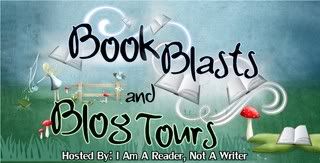Once upon a
time, an attorney from Texas moved to the U.S. Virgin Islands, bought a
rainforest house, and learned to believe in everyday magic. She was me, and I
fell in love, with the house, with the islands, and with the people I met
there. If fiction is life without the boring parts, then it is no surprise that
when I started writing novels, they set themselves in the never-boring USVI.
But it was
more than just the house, islands, and people themselves that set the story of
Katie & Annalise in motion in Saving Grace. It was a particular night at
that particular house in the USVI, a night that proved my island-born husband
right when he told little-ole-doubting me, “Pamela, you’ve got a jumbie in your
house.” A jumbie as in a voodoo spirit? “Yeah, right.”
Or at least
that’s what I thought until the night with the money. Our family was moving to
Texas, and Eric was the last one of us left on-island. He had held an advertised
liquidation sale that day. He ended the sale with $18,000 in his pocket, and a
lot of the wrong kind of attention. Eric went to our house, Estate Annaly, to
spend his last night there, all by himself except for the money. Cash is
attractive anywhere, and especially in socioeconomically disadvantaged
communities where there are few realistic consequences for law breaking, like
St. Croix.
Now, Annaly
was up in a remote part of the rainforest on St. Croix. There were no
streetlights, the house had no phones, and the police were a half hour away, if
you could get hold of them by cell phone, and if they chose to come at all when
called. In addition, the house was only partially completed. In fact, we didn’t
have locks on most of the ground floor windows, and a 10-year old child could
break in. And had. More than once.
We’d always
felt safe at Annaly, though, in part because of our six dogs, but also because
of that force I couldn’t explain but that Eric called our jumbie. Plus, we had
a flare gun, a machete, and an aluminum baseball bat. We were practically an
army unto ourselves. Well, maybe not quite. But we were as ready as we could be
for intruders on an island where I was early-on warned that, as a Continental,
I should get an unmarked gun, and, if my home was invaded, shoot to kill and
dump the body offshore. Horrifying, right? But in the eyes of local justice, a
Continental was rarely justified in home- or self-defense. Seriously. I opted
against the gun, but I never forgot the warning.
After his
liquidation sale, Eric was awakened in the middle of the night by a car pulling
up outside the house. No visitor is a good visitor at that hour, and Eric heard
multiple male visitor’s voices. Eric sprinted to the top floor of the house
with the money and his “weapons” and barricaded himself into a bedroom. Then he
called me in the States on a really bad cell phone connection. He felt sure the
men would not only get in, but that he was at their mercy. He wanted to hear my
voice, just in case. The call dropped almost as soon as we’d said hello to each
other, and I hung up with no idea of what was happening.
A wind
whipped up and the house shook. Eric heard the dogs barking and growling at the
visitors, but the men advanced anyway. They banged on the doors and shouted.
They pounded on the small panes of the windows. They howled with rage and money
lust, but they couldn’t get in the wailing house. Finally, they left. Despite
all odds, Eric was safe. Shaken, but safe.
After that,
it was hard for me to argue against the existence of Eric’s jumbie. I looked
back on our time at Annaly through new eyes, wide open and grateful eyes. And I
started writing.
That is the
story of how Saving Grace was born, along with the rest of the books in the
Katie & Annalise series. I hope you enjoy the books, the island, and
especially the big rainforest jumbie house.
About the
Author:
Pamela Fagan
Hutchins writes award-winning mysterious women’s fiction and relationship humor
books, and holds nothing back. She is
known for “having it all” which really means she has a little too much of
everything, but loves it: writer, mediocre endurance athlete (triathlon,
marathons), wife, mom of an ADHD & Asperger’s son, five kids/step-kids,
business owner, recovering employment attorney and human resources executive,
investigator, consultant, and musician.
Pamela lives with her husband Eric and two high school-aged kids, plus
200 pounds of pets in Houston. Their hearts are still in St. Croix, USVI, along
with those of their three oldest offspring.
Her latest
book is the mystery/women’s fiction, Saving Grace.
About the
Book:
If you're at
all inclined to be swept away to the islands to fall in love with a rainforest
jumbie house and a Texas attorney who is as much a danger to herself as the
island bad guys, then dive headfirst with Katie Connell into Saving Grace.
Katie escapes
professional humiliation, a broken heart, and her Bloody Mary-habit when she
runs to the island of St. Marcos to investigate the suspicious deaths of her
parents. But she trades one set of problems for another when she is bewitched
by the voodoo spirit Annalise in an abandoned rainforest house and, as worlds
collide, finds herself reluctantly donning her lawyer clothes again to defend
her new friend Ava, who is accused of stabbing her very married
Senator-boyfriend.
a Rafflecopter giveaway












